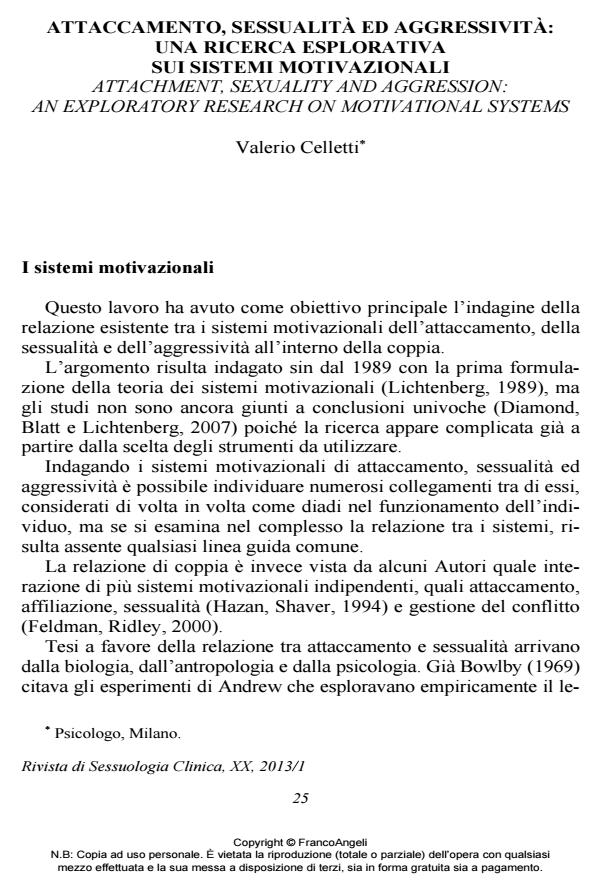Attaccamento, sessualità ed aggressività: una ricerca esplorativa sui sistemi motivazionali
Titolo Rivista RIVISTA DI SESSUOLOGIA CLINICA
Autori/Curatori Valerio Celletti
Anno di pubblicazione 2013 Fascicolo 2013/1
Lingua Italiano Numero pagine 10 P. 25-34 Dimensione file 369 KB
DOI 10.3280/RSC2013-001002
Il DOI è il codice a barre della proprietà intellettuale: per saperne di più
clicca qui
Qui sotto puoi vedere in anteprima la prima pagina di questo articolo.
Se questo articolo ti interessa, lo puoi acquistare (e scaricare in formato pdf) seguendo le facili indicazioni per acquistare il download credit. Acquista Download Credits per scaricare questo Articolo in formato PDF

FrancoAngeli è membro della Publishers International Linking Association, Inc (PILA)associazione indipendente e non profit per facilitare (attraverso i servizi tecnologici implementati da CrossRef.org) l’accesso degli studiosi ai contenuti digitali nelle pubblicazioni professionali e scientifiche
In sessuologia il tema dell’aggressività nella sessualità è ampiamente studiato. Al contrario, gli effetti dell’attaccamento nella sessualità sono raramente discussi. I teorici dell’attaccamento fanno di frequente riferimento all’aggressività, piuttosto che alla sessualità. La teoria dei sistemi motivazionali potrebbe essere un quadro teorico adatto a studiarli insieme. Questa ricerca approfondisce la relazione tra questi tre sistemi (attaccamento, sessualità e aggressività) e propone una direzione per futuri studi.
Parole chiave:Sessualità, attaccamento, aggressività, sistemi motivazionali, interazione, strumenti di valutazione.
Valerio Celletti, Attaccamento, sessualità ed aggressività: una ricerca esplorativa sui sistemi motivazionali in "RIVISTA DI SESSUOLOGIA CLINICA" 1/2013, pp 25-34, DOI: 10.3280/RSC2013-001002